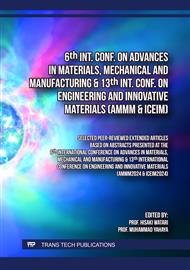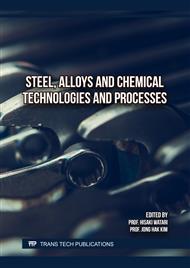p.31
p.37
p.43
p.51
p.57
p.65
p.73
p.79
p.85
Relationship between Yield Strength and Cluster Formation of Multi-Component Aluminum Alloys by Monte Carlo Simulation
Abstract:
Pre-precipitate (cluster) strengthening is an integral aspect in the design of novel aluminum alloys. To investigate the impact of clusters on the strength of different aluminum alloys, Monte Carlo methods and the modified embedded atom method potential function were employed to simulate dilute aluminum-rich solid solutions, and these ten elements (silicon, magnesium, manganese, titanium, zirconium, chromium, iron, lithium, copper and nickel) were added as solute elements. The yield strength was evaluated and then the relationships among cluster size, cluster number, yield strength, and alloy compositions were analyzed. Finally, in the binary aluminum alloys the introduction of zirconium produces the largest yield strength among these ten elements, on the opposite side, the yield strength of Fe added alloy is the lowest. In most ternary aluminum alloys, after Mg, Zr and Li were added, the yield strength was increased compared to the results of the binary alloy, and the yield strength of Al-Li-Zr alloys is the largest in all ternary alloys. For multi-component aluminum alloy, the increase in type and number of elements resulted in fewer clusters, larger cluster size, and higher yield strength.
Info:
Periodical:
Pages:
57-62
Citation:
Online since:
June 2025
Authors:
Keywords:
Price:
Сopyright:
© 2025 Trans Tech Publications Ltd. All Rights Reserved
Share:
Citation:



